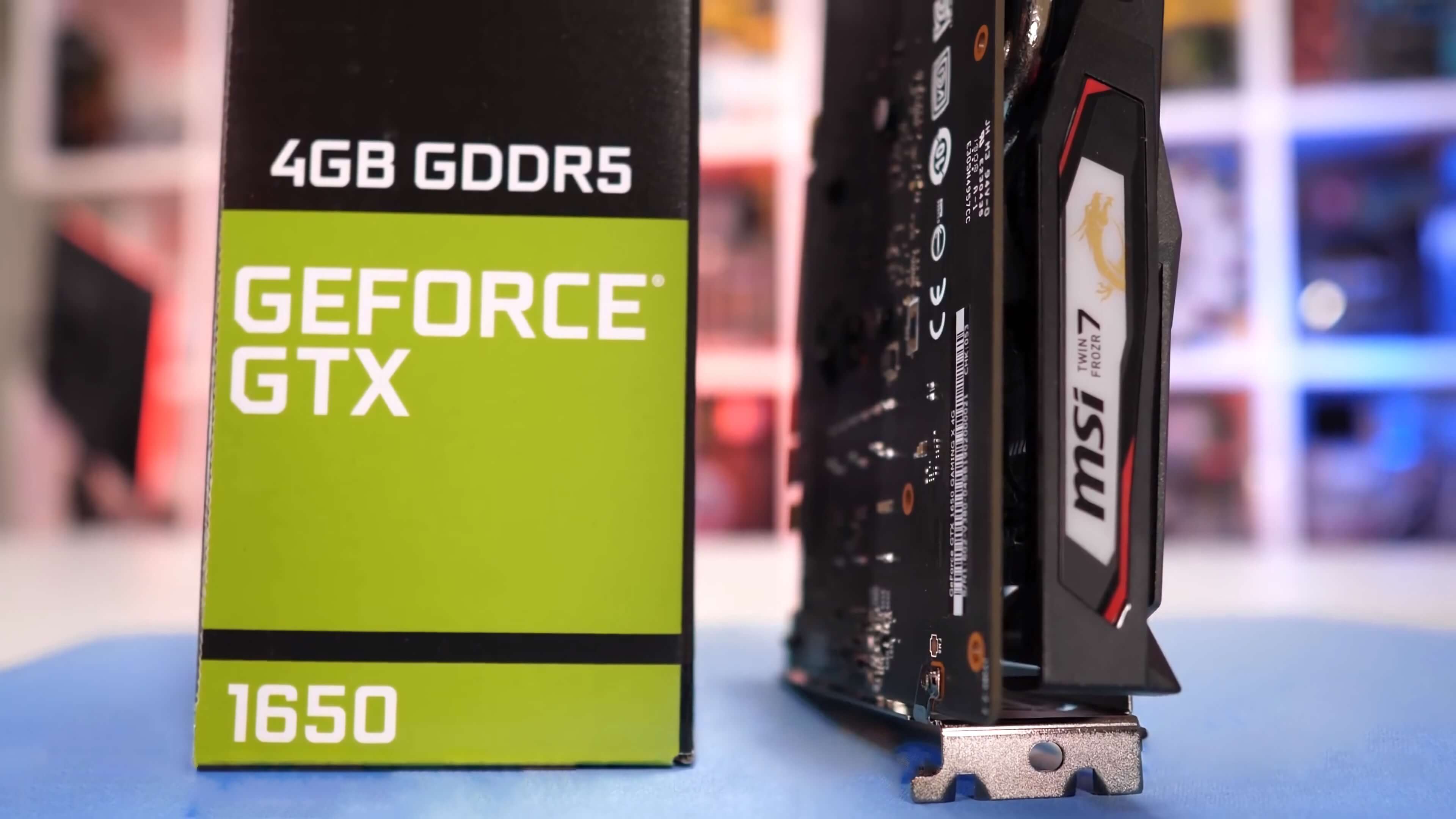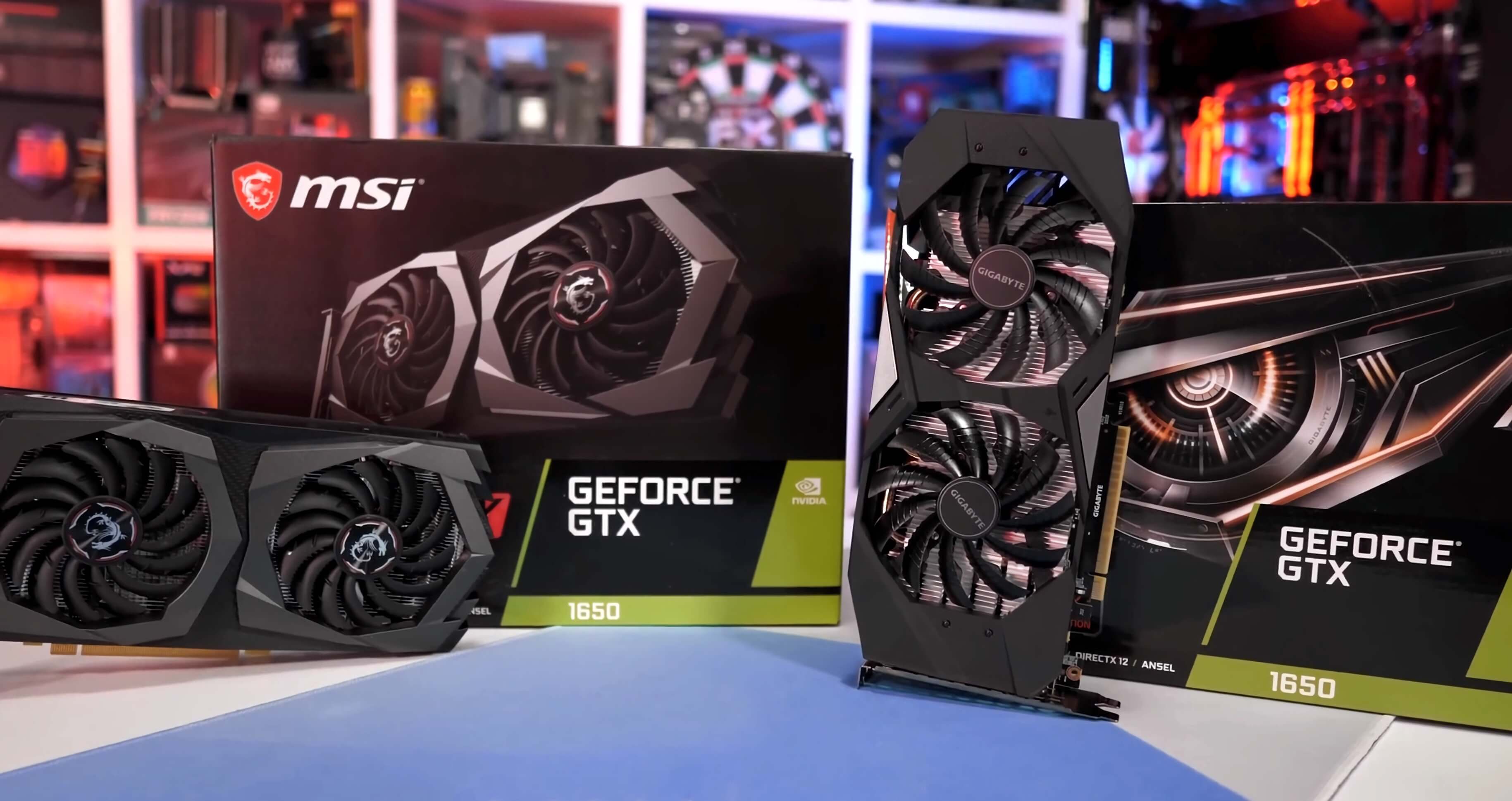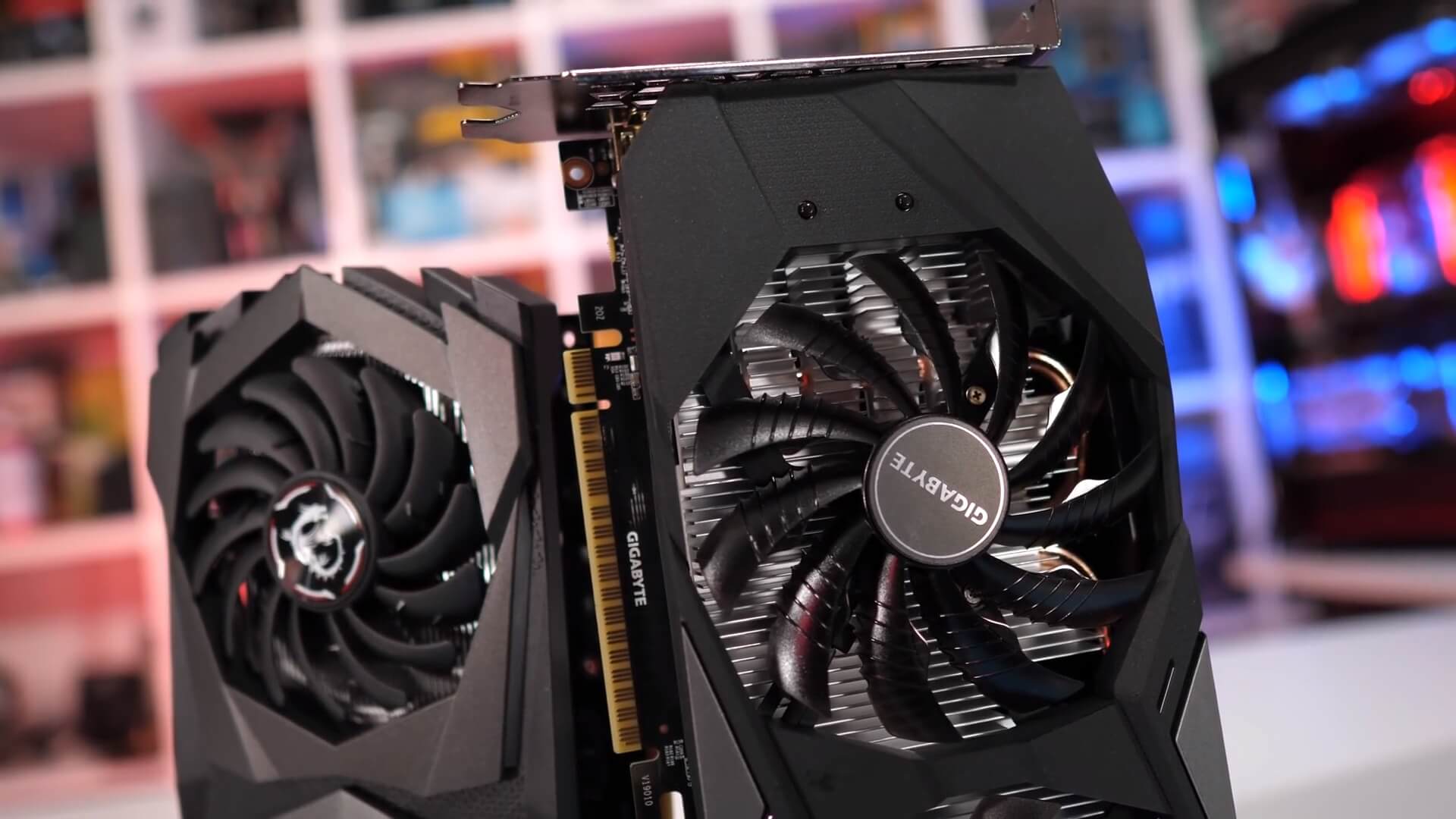Based on the TU117 die the new GeForce GTX 1650 still includes all of the new Turing shader innovations that improve performance and efficiency, including support for concurrent floating point and integer operations, a unified cache architecture with larger L1 cache, and adaptive shading.
The TDP for the new GPU is just 75 watts and that means it doesn't require an external power connector, so it will be the fastest graphics card available that won't need external PCIe power. Then like the GTX 1660 Ti and 1660, there won't be a Founders Edition version, but no big loss there.
The GTX 1650 packs 896 CUDA cores, that's 36% fewer than what you get with the GTX 1660. That is the biggest downgrade we've seen in the Turing product stack yet. For the most part we've seen cuts of around 20% when going from the 2080 to the 2070, 2070 to the 2060, 2060 to the 1660 Ti and then just 8% from the 1660 Ti to the vanilla 1660.
The only other example of over a ~30% downgrade was the RTX 2080 Ti to the RTX 2080, here we saw a 32% reduction in core count and this lead to a ~25% reduction in performance at 4K. We expect to see a similar performance reduction for the GTX 1650 when compared to the 1660, as the 36% reduction in cores is backed by a 33% reduction in memory bandwidth.
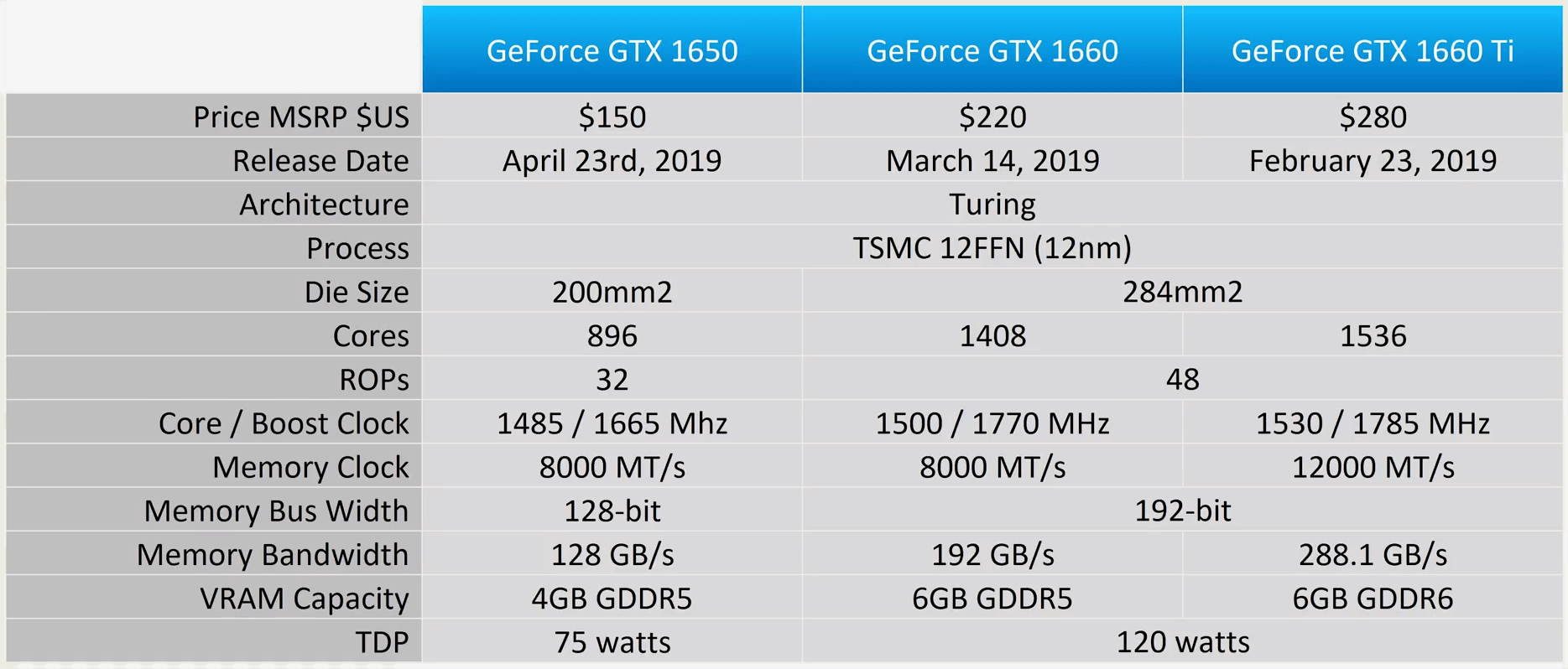
Moreover, whereas the 1660 is armed with 6GB of GDDR5 memory, the GTX 1650 gets 4GB using a mere 128-bit wide memory bus for peak memory bandwidth of 128GB/s. The default clock speeds have been set to a base of 1485 MHz and a boost of 1665 MHz, a 7% clock speed reduction when compared to the GTX 1660.
Nvidia claims the GTX 1650 is twice as fast as the GTX 950, and up to 70% faster than the GTX 1050 at 1080p, though the wording is a little tricky here as their claim is specific to modern games with complex shaders. So games such as Shadow of the Tomb Raider and Wolfenstein II, for example. Therefore the average performance uplift could be lower depending on the title.
For testing we'll be looking closely at 1080p performance in a dozen titles. Our test system is the usual GPU bench that includes a Core i9-9900K clocked at 5 GHz with 32GB of DDR4-3200 memory...
Benchmarks
Kickstarting the benchmarks is a new title in our test suite: World War Z. This game supports the Vulkan API though performance for Nvidia GPUs isn't great with the current driver, so GeForce cards have been tested using DX11 while AMD uses the lower level Vulkan API. Even so this saw the Radeon RX 570 smoke the new GTX 1650 by a whopping 38% margin. Meanwhile the GTX 1650 was 26% faster than the 1050 Ti, but also 15% slower than the 1060 3GB.
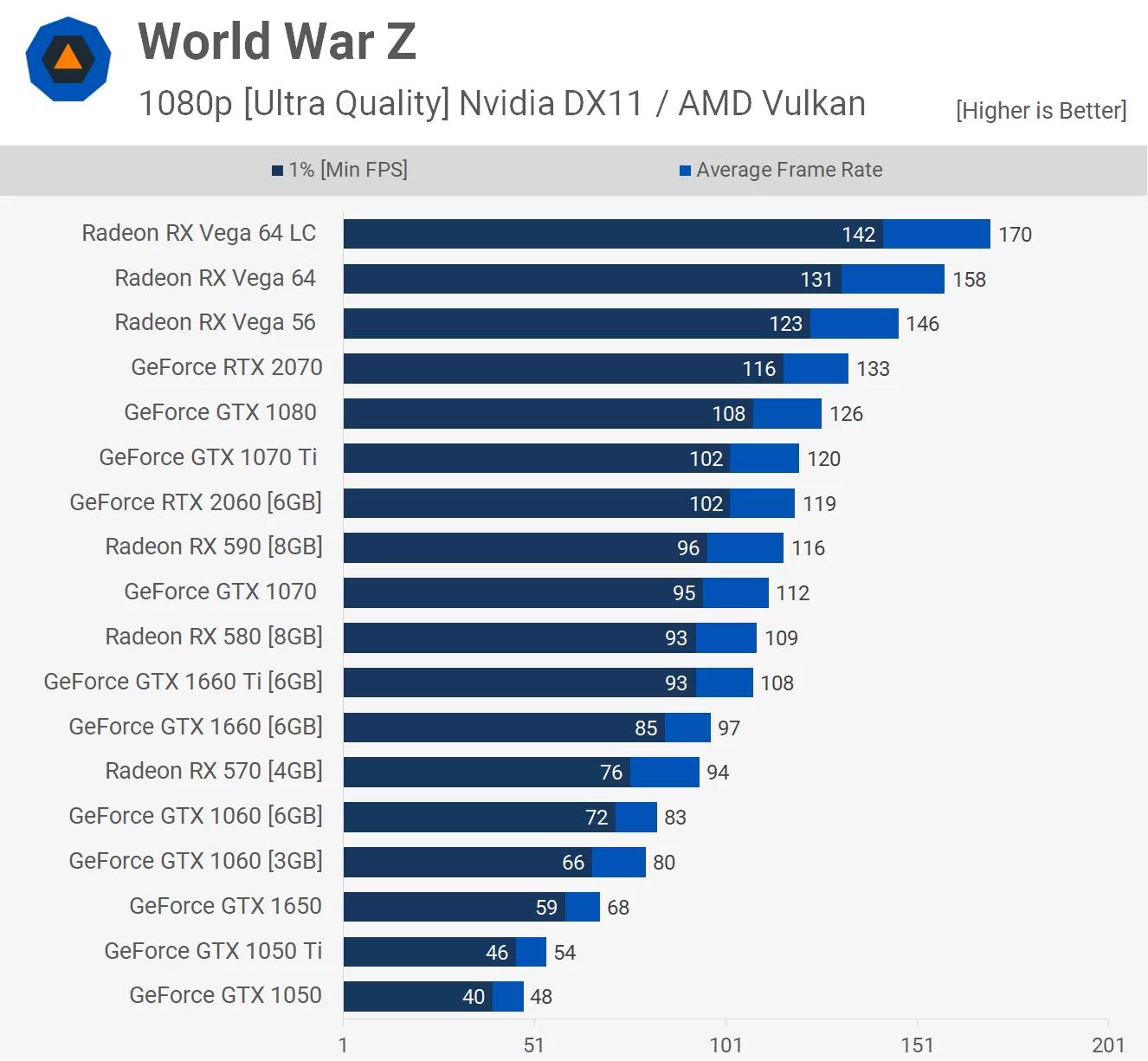
Performance in Apex Legends was very competitive between the GTX 1650 and RX 570 at least on the quiet section of the game that we test. The Radeon GPU was faster by a slim 4% margin and generally anything less than 5% we deem a draw.
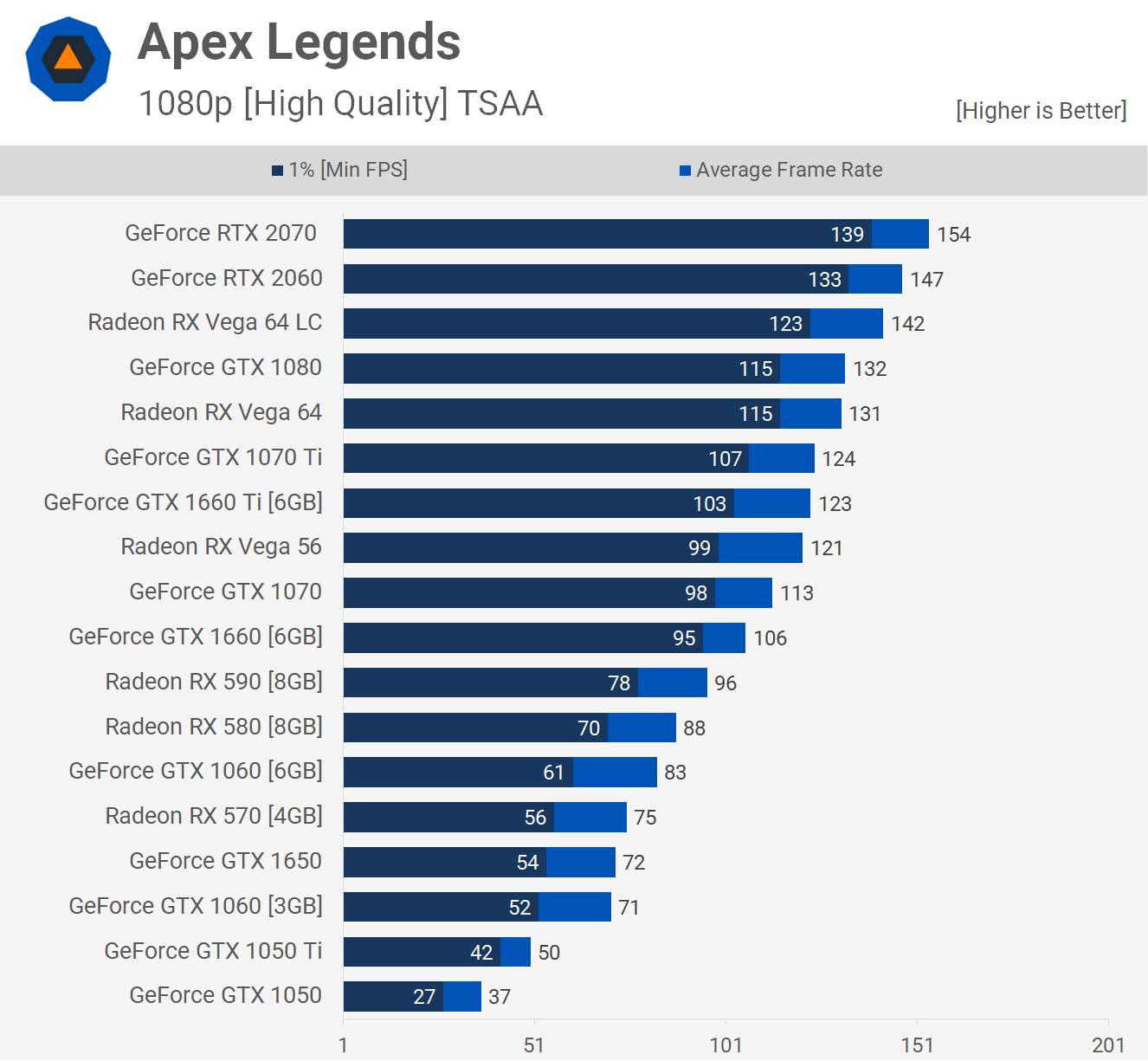
The Division 2 has been a strong title for AMD and that continues with this RX 570 vs. GTX 1650 battle. Here the Radeon GPU offered 27% more performance at 1080p making it the vastly superior GPU.
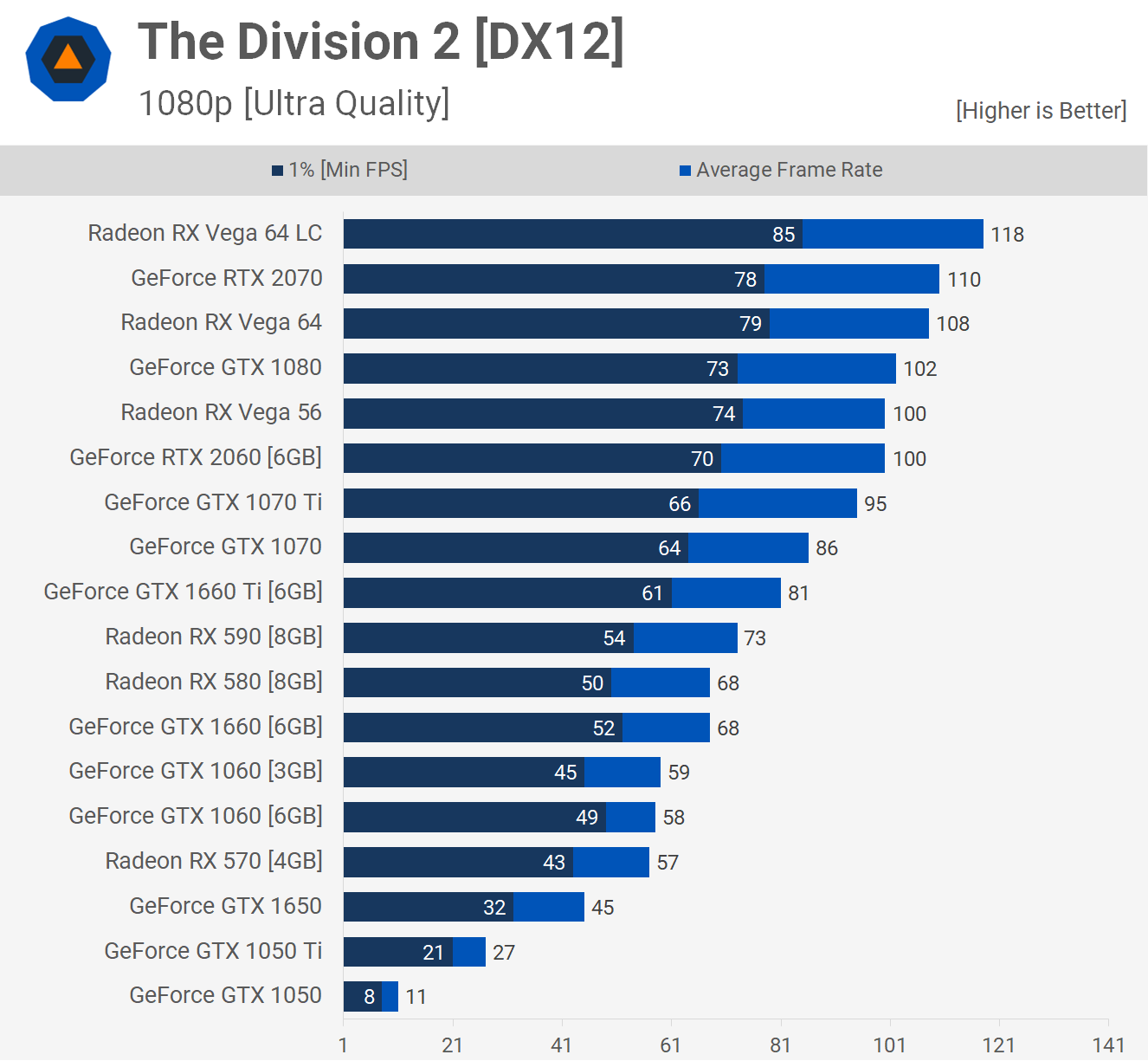
Nvidia promised good things in new complex titles such as Shadow of the Tomb Raider but here we can see the GTX 1650 simply isn't delivering. Performance was similar to that of the RX 570 but for a new GPU, similar performance isn't good enough. The GTX 1650 should be comfortably beating the 570 at this price point.

The GTX 1650 takes a serious beating in Forza Horizon 4 where it was 21% slower than the RX 570. This difference was also noticeable in-game as the RX 570 never dipped below 60 fps, allowing it to offer a smoother gaming experience.
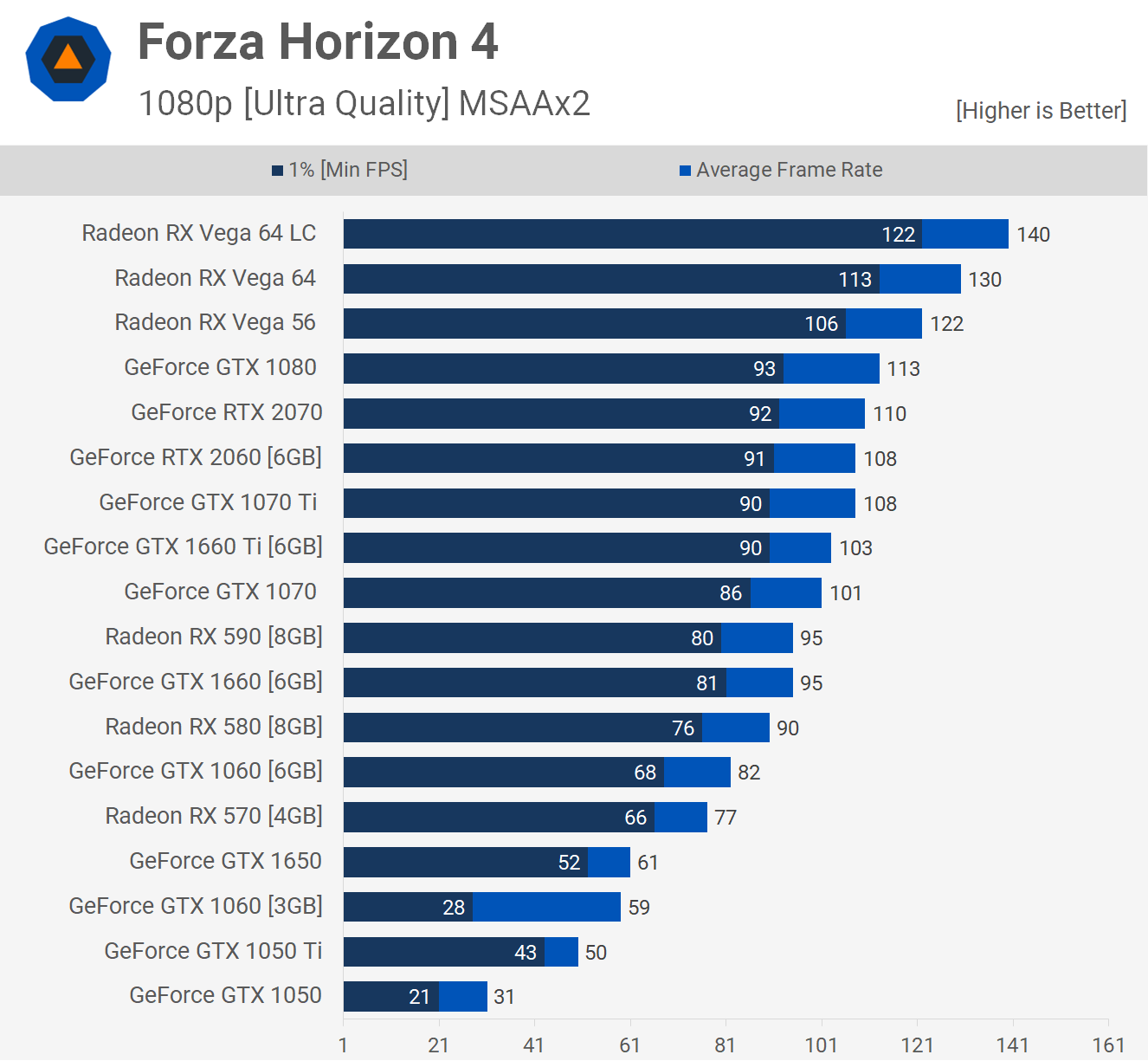
On average the Radeon RX 570 was 11% faster than the 1650 when testing with Just Cause 4, typically this is a good title for Nvidia but even here the new budget Turing can't get it done.

Resident Evil 2 is another new title that works well on AMD hardware and here the RX 570 was 30% faster than the GTX 1650. While the Radeon GPU was able to maintain over 60 fps at all times, the 1650 dropped down to 50 fps.

One game that you can always depend on to boost GeForce performance is Fortnite and here the GTX 1650 is able to edge out the RX 570 by a small margin. The GTX 1650 was also 26% faster than the 1050 Ti.
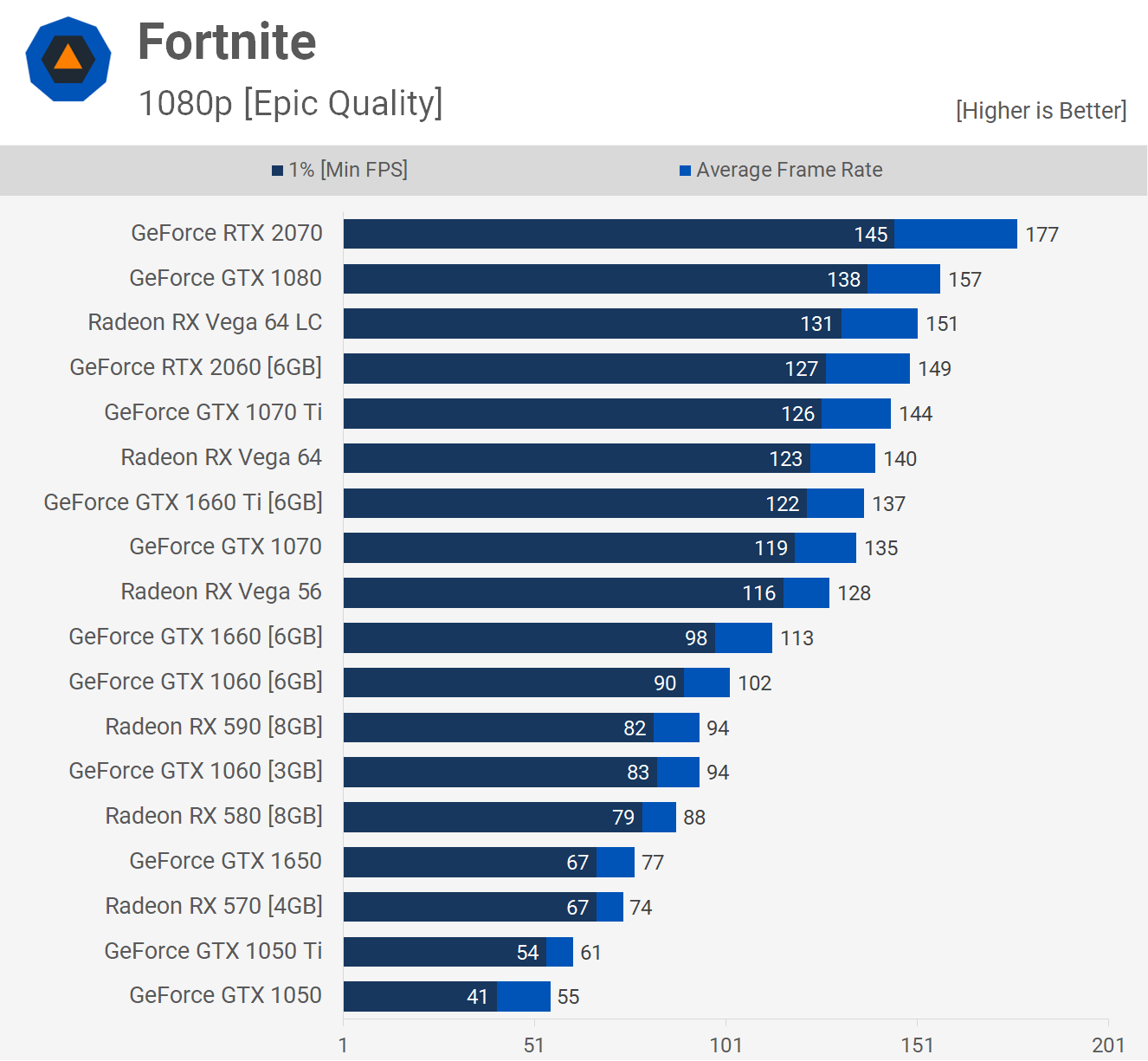
Metro Exodus is an Nvidia sponsored title so you'd expect the GTX 1650 to get the win here, but it doesn't. Basically it matched the RX 570 but that was the best it could do here.
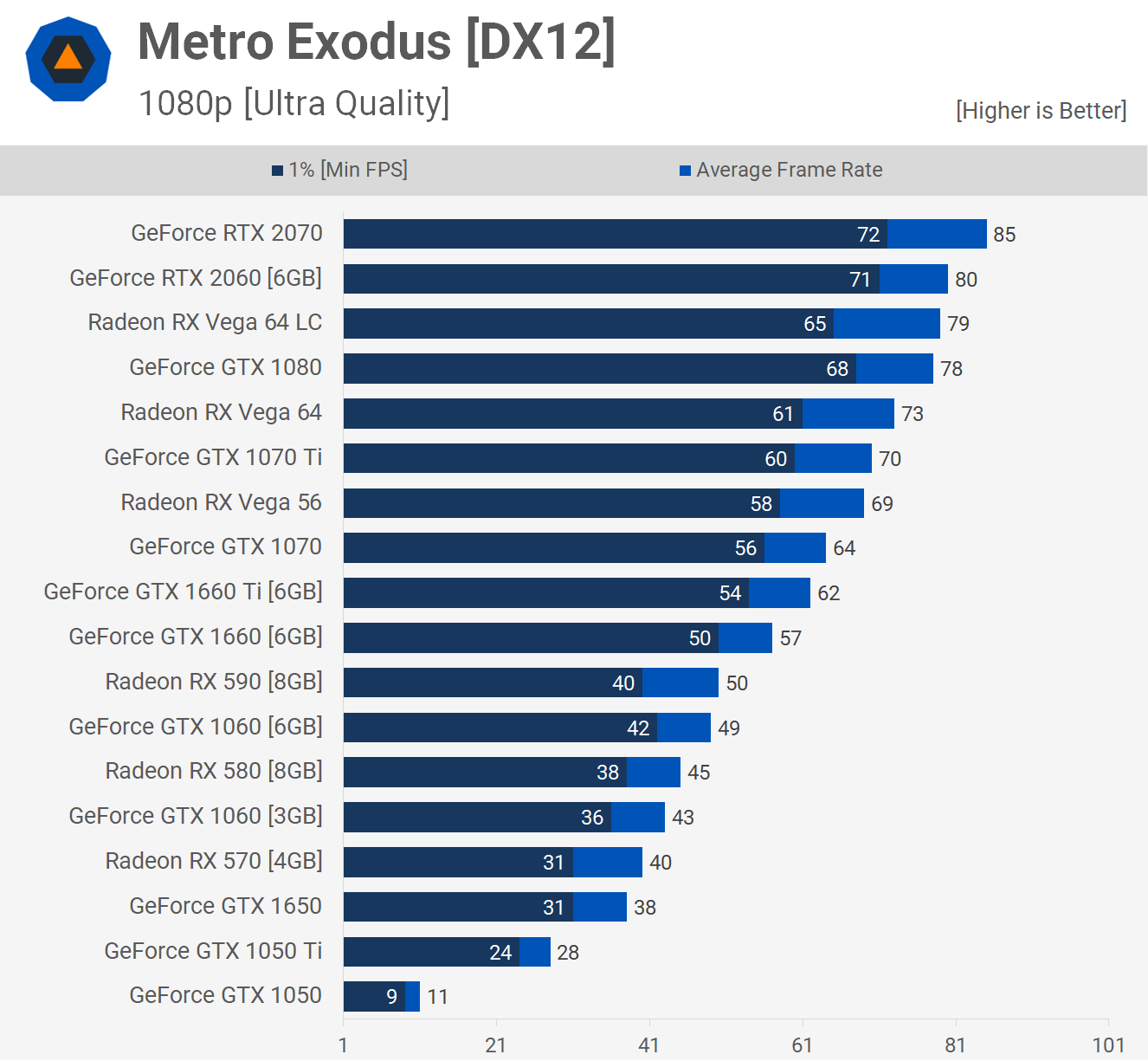
Rainbow Six Siege throws us a curveball, though given what we've seen from Turing in this title I was ready for it. Here the GTX 1650 is able to beat the RX 570 and by a convincing margin, shame we didn't see more of it.

We see similar frame rates in Battlefield V. The RX 570 was slightly faster on average while both provided a similar 1% low result. This meant the GTX 1650 was 26% faster than the GTX 1050 Ti and 11% slower than the 1060 3GB.
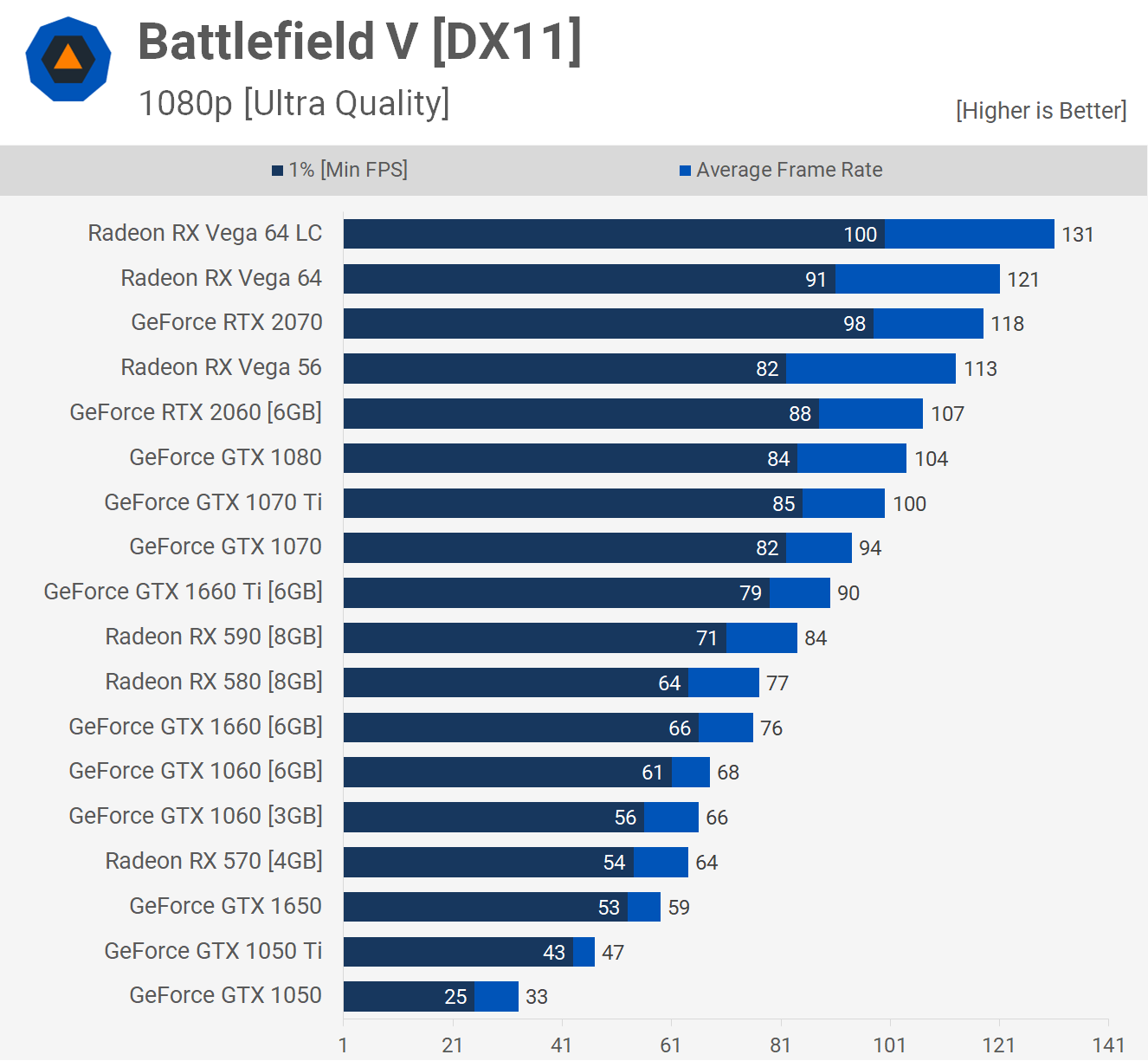
The GTX 1650 doesn't impress in Far Cry New Dawn, scoring 23% faster than the GTX 1050 Ti but 18% slower than the RX 570. In fact, at 1080p using the ultra quality preset it struggled to average 60 fps.

Power Consumption & Temperatures
Moving on to power consumption, the GTX 1650 is reasonably impressive in this regard. The Gigabyte board we tested pushed total system consumption to 184 watts, while the MSI card hit 192 watts. This is only a ~10% increase in system draw for what looked to be over 30% improvement in performance.
In comparison, the Radeon RX 570 pushed total system consumption 55% higher. So the 1650 is certainly more efficient, but we're not convinced it's a better product overall.

Taking a quick look at operating temperatures and clock speeds, the MSI Gaming X peaked at 61 degrees in a 21 degree room and this saw it typically operating at a boost frequency of 1920 MHz. Needless to say, it was very cool and quiet.
The larger Gigabyte Gaming OC was able to best that result with a peak operating temperature of just 58 degrees and this allowed it to average 1950 MHz for the boost clock. In terms of frame rate performance, this didn't make a difference, but running slightly cooler for a slight bump in frequency is a win for Gigabyte.
Performance Summary
At this point your socks should be firmly in place, the GeForce GTX 1650 has been pretty underwhelming so far. But to get a clearer picture, let's look at a few head to head comparisons.
GTX 1650 vs. GTX 1050 Ti
Nvidia keeps comparing the GTX 1650 to the GTX 1050, but the 1650 is $10 more than the launch price of the 1050 Ti, so it's by no means a replacement for the $110 GTX 1050. When compared to the 1050 Ti, the 1650 is 35% faster on average for a few extra bucks. After three years a 35% boost at this price point is kind of underwhelming.
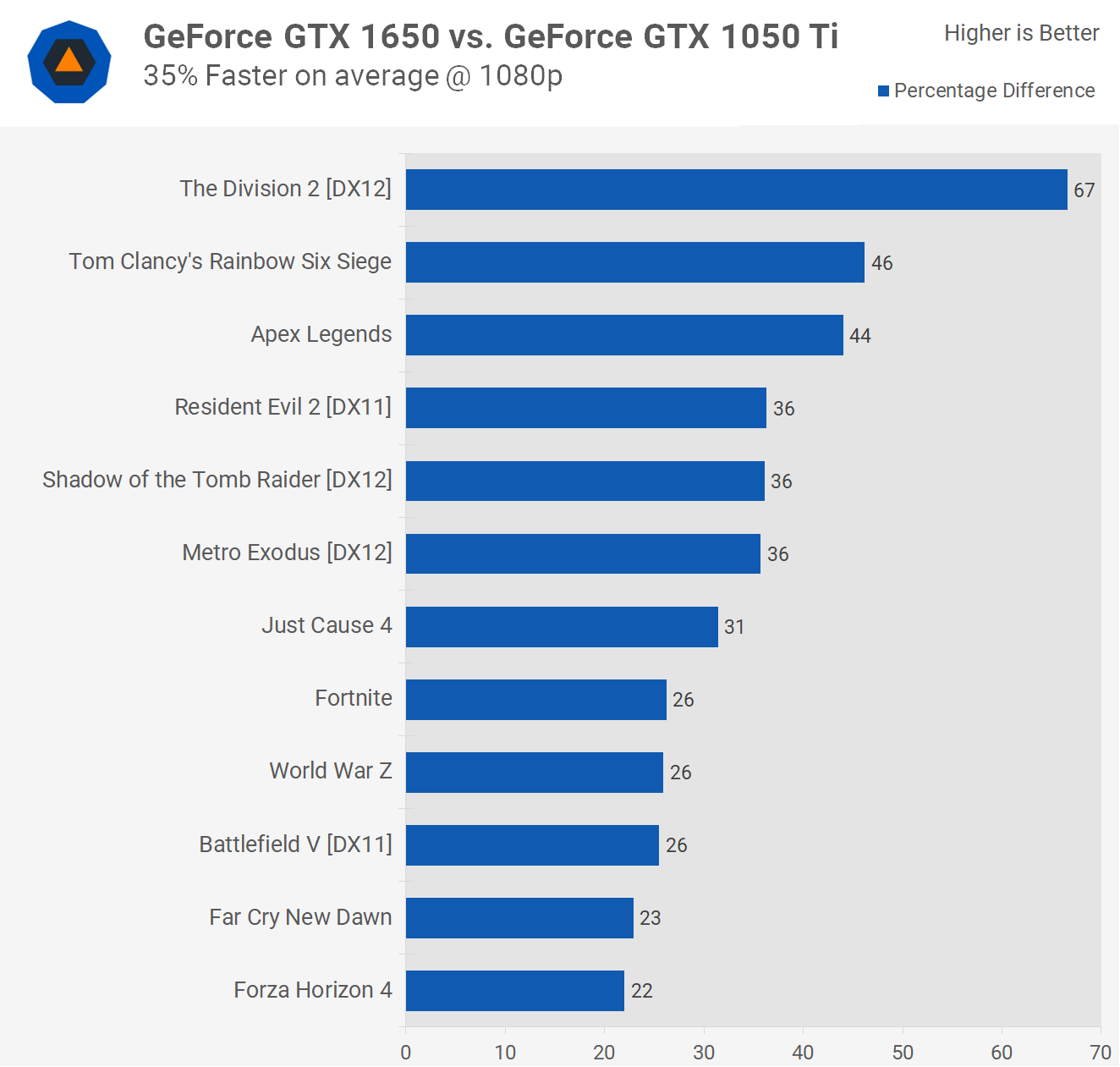
GTX 1650 vs. GTX 1060 3GB
When compared to the GTX 1060 3GB (historically a more expensive GPU), the GTX 1650 was about 9% slower. Granted the 1060 came in at $200, but again, it's a 3 year old GPU. The GTX 1650 offered small performance gains in a few titles, but best case scenario, it wasn't even 5% faster than the outgoing Pascal GPU.
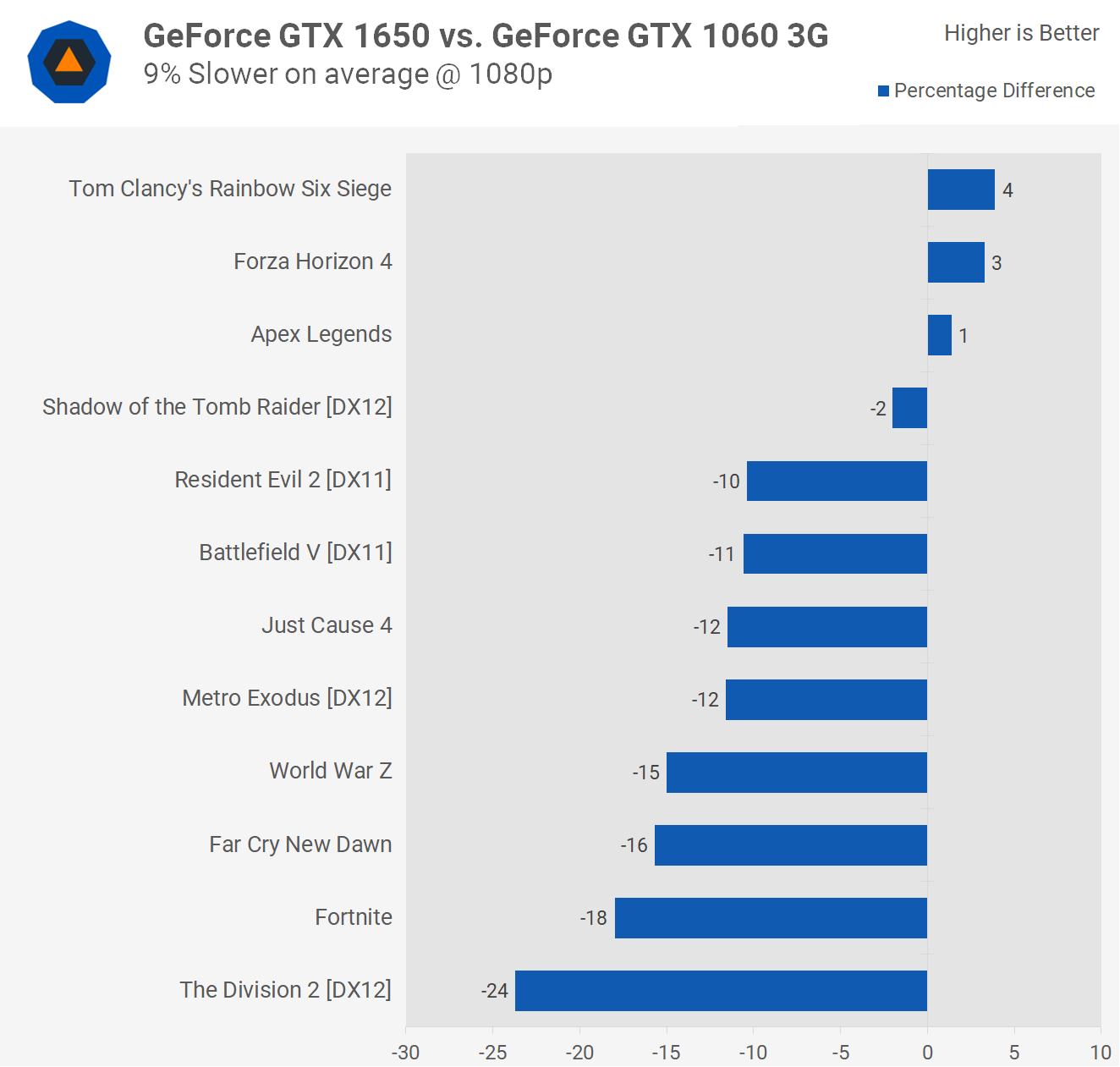
GTX 1650 vs. GTX 1060
When compared to its immediate sibling, the GTX 1660, the GTX 1650 was 32% slower which seems fine given it's 32% cheaper, that works out rather well. At least in a GTX Turing bubble it does. But as you're about to see in this price range, there's quite a bit of competition with AMD lowering prices in reaction to Nvidia's latest releases.
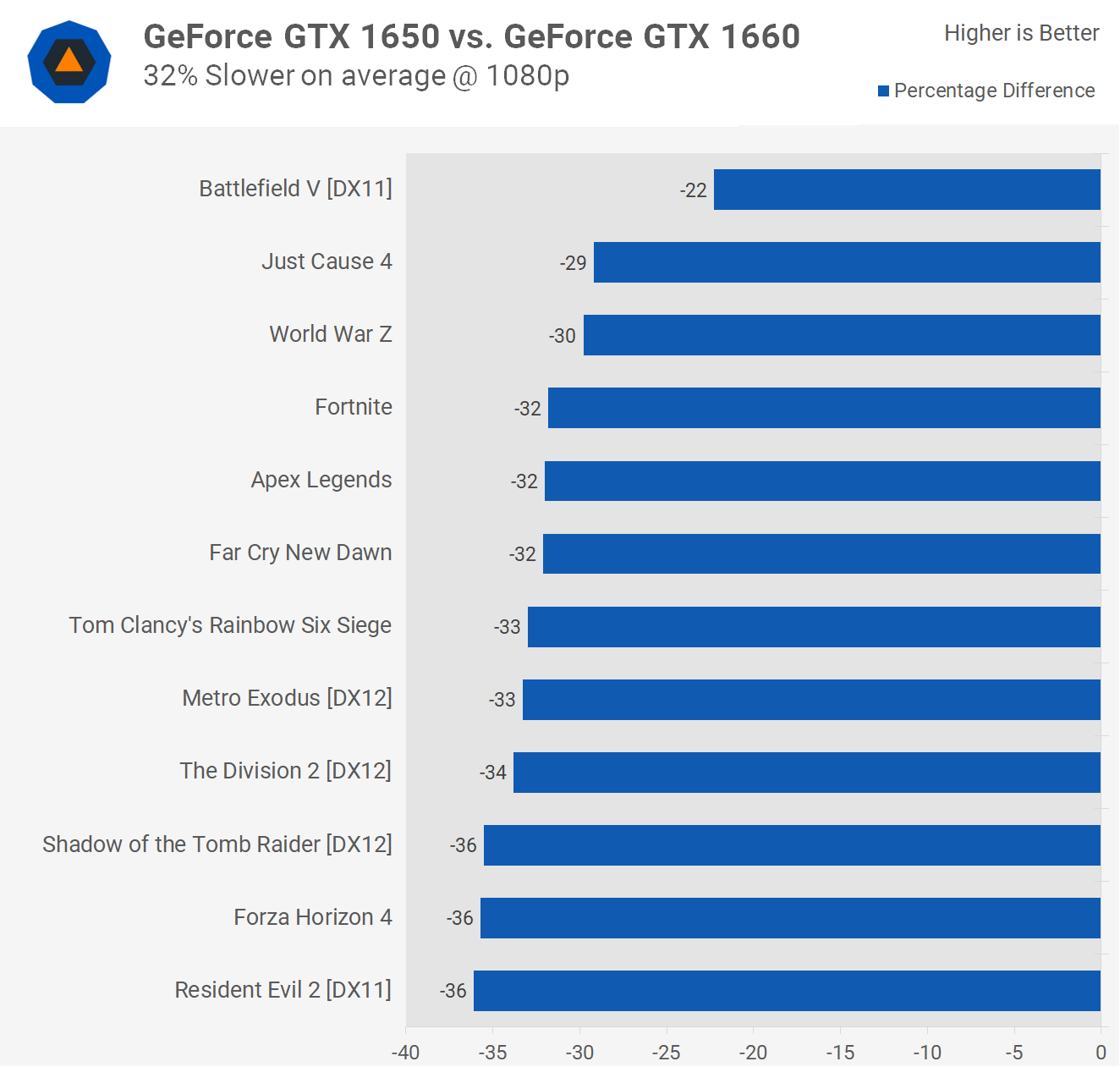
GTX 1650 vs. Radeon RX 570
Here we have the RX 570 which is a $170 part, or at least it was once upon a time. For many months this Radeon GPU has been selling for as little as $130 and currently there are multiple options at that price. This makes the GTX 1650 ~15% more expensive and yet we found it to be 10% slower on average.
In some titles that gap was as wide as 20% slower, so in pure value terms the GTX 1650 cannot compete with the Radeon.

Wrap Up
Our cost per frame graph will paint the ultimate picture of where the GTX 1650 stands at launch. Two years after the release of the RX 570, we're getting a GPU that's more costly per frame.
Even if we ignore the insanely good value RX 570, the RX 580 is still better value thanks to its recent price cuts, offering way more performance for a small price premium. We can see that the GTX 1650 offers a similar level of value to that of the 1660, but at under $200 where Nvidia faces stiffer competition and where extra frame rates can make a world of difference, this won't cut it to make our recommendation.

At the current $150 MSRP, the GTX 1650 is not a bad product but if you are seeking the best possible frame rates for every dollar spent, then the RX 570 is simply superior. At $110 the 1650 would have been competitive, not particularly exciting but at least competitive.
Some will argue that the GTX 1650 is great because it doesn't need an external power connector, but you'd be clutching at straws on that one. You can upgrade your power supply if need be for around $35 to a decent 450-500 watt model and that'll get you out of trouble. Moreover, we noticed that the GTX 1650's that lack an external PCIe power input are clocked lower as they're limited to 75 watts – both MSI and Gigabyte cards tested here had a power connector – so that will impact performance further. In other words, you could end up with a very small upgrade over the GTX 1050 Ti.
We've purchased an additional GTX 1650 base card without the power connector and will benchmark that soon, but we doubt that testing will place the GTX 1650 in better light. For mainstream and affordable GPU options we saw the appeal of the RTX 2060, GTX 1660 Ti and 1660, in all cases receiving our recommendations. For less money however the RX 570 lives on.
